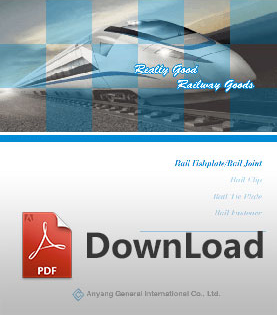How rail clips are made?

As a part of railway fastening system, rail clip is designed for resulting in the role of buckle pressure on the track by bending and twisting. Elastic rail clip is a reliable connection between steel rails. Main rail clip function is as possible as ensure integrity of railway track. In summary, elastic rail clips are used to prevent vertical and horizontal movement of steel rail relative to the railway sleeper. And then, rail clip ensure the normal gauge, so as to ensure the safety of rail vehicles.
According to different standards and applications, Rail clips can be divided into various types. The common elastic railway clip types include SKL clip, E-type rail clip, Deenik clip, Nabla clip and etc.
Elastic rail clips manufacturing process
Based on the process production, elastic rail clip manufacture process can be summarized as eight links: raw material- shearing- heating- forming- hardening- tempering- inspection- packing.
1. Raw material

In general, elastic rail clip is made of spring steel bar. Spring steel refers to the steel specifically for manufacturing spring and elastic components due to the elasticity in the quenched and tempered state. Spring steel has excellent comprehensive performance like mechanical properties, performance by the bullet-proof, fatigue, hardenability, physical and chemical properties. The raw materials of elastic railroad clip mostly include 55 Si7, 60 Si7, 65 Si7, 55 Si Cr7, 60Si2MnA, 60Si2CrA, 55Si2Mn, and 38Si7 grade of spring steel.
2.Shearing

The processing method of elastic rail clip mainly adopts hot forging process. The raw material which is spring steel has to be sheared as per length required.
3. Heating

After shearing, spring steel should be heated to forging temperature (950-1000 degrees Celsius). One thing to notice about this link is that excessive heating should be avoided to check decarburization.
4. Forming

When the spring steel bar is heated to proper temperature, it will be transferred to power press for forging. Three sets of molds and fixtures are kept as drawings before hammering.
5. Hardening

The forged rail clips are passed through a quenching oil tank in a conveyor belt for a period of 12 minutes at a temperature of 70℃. The maximum time required for the rod to be removed from the heating furnace to be immersed in the quenching oil time (including forming) is 20 seconds. Cleaning quenching oil bath, and then, checking the Dimensional accuracy and quench hardness of rail clips.
6. Tempering

After quenching, the elastic rail clips are tempered at 400-500℃ for a period of 55-60 minutes, which can achieve appropriate toughness in the spring.
7. Inspection

Every rail clip is put through strict quality controls before delivery, such as fatigue test, hardness test and load test, etc. All inspections will go through according to requirements from different customers.
8. Packing

Surface treatment is a necessary link before packaging if customer has requirement. There is a range of surface treatments to meet the needs of varying applications, such as plain (oiled), Oxide black, color painting or other methods according to customer requirements. For package, a lot of packing methods are suitable for elastic rail clips, woven bags is one of the common packing method.
As a trusted elastic rail clip manufacturer from china, AGICO Rail has over 20 years’ experience in processing all types of railway clip and other railway fasteners like railroad spike, railway fish plate, rail bolt and etc. Besides the strict quality control, free sample and fast shipping can be provided by AGICO Rail.
- Rail Fasteners
- rail fastening system
- rail clip
- railroad spike
- Track bolt
- rail shoulders
- rail anchor
- rail clamp
- tie plate
- Rail Pad
- rail insulator
- rail plastic dowel
- other rail fasteners
- Railway Switch
- SKL series rail fastening system
- Chinese standard rail fastening system
- screw spikes
- Crane rail fastening system
- K type rail clip for Africa
- Hey-Back Rail Fastening
- rail fasteners for Mexican market
- Ss25 screw spike
- Ss35 rail sleeper screw spike
- Ss8 screw spike
- coach screw
- Crane Rail Clip
- Rail Joints (Fishplate)
- Steel Rail
- Railway Sleeper
 rail clip
rail clip
 rail joints
rail joints

 Español
Español English
English
